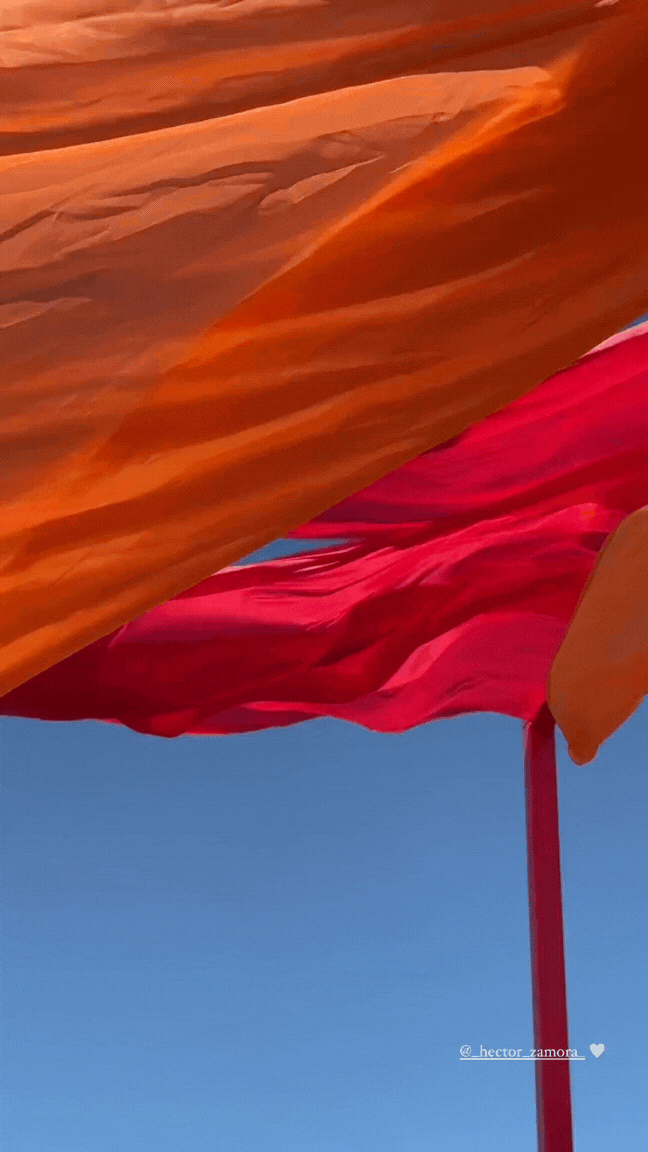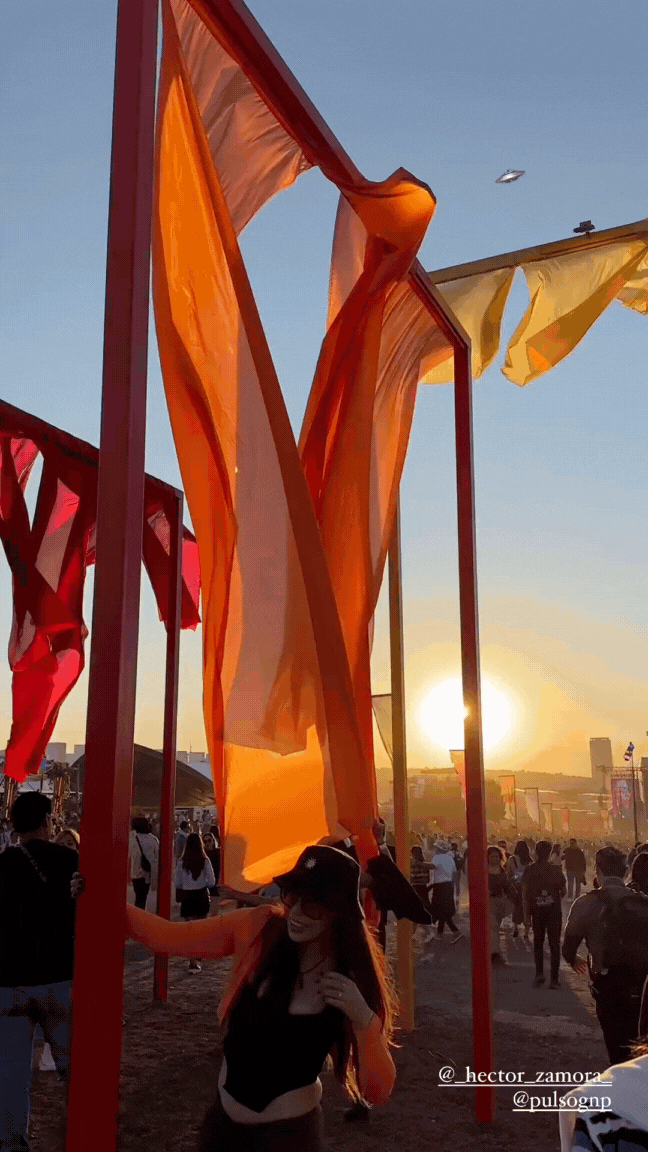Héctor Zamora
Pabellón Siete
The latest proposal by Mexican artist Héctor Zamora, produced in collaboration with Trámite I Collectors’ Bureau and with the support of the Secretary of Culture of Querétaro, features a monumental set of metal structures shaped like arches, from which colorful fabrics hang. Through these elements, the artist offers a reinterpretation of the pavilion, a term originally used to describe a medieval military tent.
In this case, Zamora's pavilion is fragmented into a series of "walls" of varying sizes, with heights ranging from 4 to 7 meters and widths between 3.5 and 6 meters. While these "walls" might appear to create divisions within the occupied space, they depart from their traditional function due to their random arrangement and composition. Although each structure's frame is solid, the fabrics that hang from them are at the mercy of the breeze and wind, allowing for direct public interaction and free movement between the arches.
Using a palette of warm colors such as red, yellow, and orange, the artist draws inspiration from Grande Núcleo (1960) by Hélio Oiticica, a prominent figure in Brazilian Neoconcretism, whose practice was characterized by a radical use of color to dissect and transform space.
Evoking windows or clotheslines, Zamora's pavilion incorporates a playful and interactive dimension, recalling the work he presented in Porto Alegre during the Mercosul Biennial 2022. Sem Título (Travessura) was a site-specific installation on the balconies of Travessa Rua dos Cataventos, an iconic street in Porto Alegre’s historic center. In this piece, Zamora aimed to provide viewers with a joyful and colorful sensory experience through a dynamic interplay of light, color, and wind.
Once again, Zamora employs chromatic play and contrasting textures and materials to create a work capable of transforming its surroundings, inviting us to rethink our understanding of space. This pavilion seeks to become a meeting point that conveys lightness and joy, disrupting the usual order and expectations of space with its vibrant colors and impressive scale.


About the Artist
Héctor Zamora's work transcends the conventional exhibition space, reinventing it, redefining it, generating friction between the common roles of public and private, exterior and interior, organic and geometric, savage and methodical, real and imaginary.
From his technical expertise and knowledge of lightweight architecture, and a meticulous emphasis on the process of conceptualization and construction of each piece, Zamora implicates the viewer's participation and requires them to question the everyday uses of materials and the functions of space.
Through determinate and often repetitive actions, the artist provokes surprising and unexpected situations. Functioning as an invitation to reflect, his work usually involves an active participation of the spectator that is made possible through an interaction with his interventions. Amongst his most recent projects, he carried out earlier this year the performance "Chimera" for the 2023 edition of Desert X in the Coachella Valley (CA), which sought to make visible issues related to migration and the American dream. Also this year, the artist orchestrated "Delirio", performance and exhibition at Labor gallery around the informal market of water lilies in Mexico City. “Strangler” (2021) was made for the Triennial Bruges: the monumental scaffolding structure completely wraps a large Austrian pine as would do the Strangler Trees that grow in tropical forests. “Lattice Detour” (2020), a curved wall made of terracotta bricks, was commissioned as a site-specific installation for the Met Museum’s rooftop. The wall modifies the view of New York City’s skyline and dictates a new kind of circulation on the site. “Uma Boa Ordem” (2006-2019), installed in the gardens of Casa Wabi (Mexico), consists of 5 winding walls that integrate to the surrounding landscape, functioning as communication devices between the visitors and bringing them together instead of separating them.
Read more here




